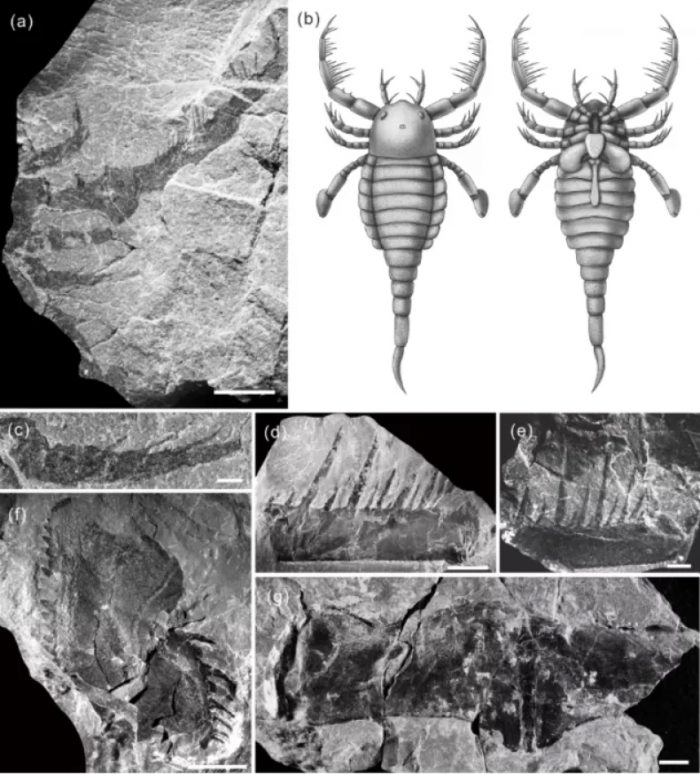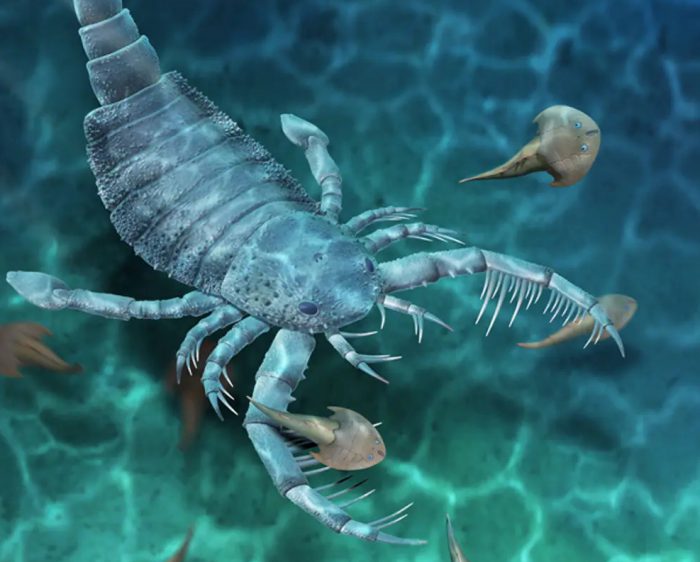What's long, crawly, and spiny all over? Chances are you don't want to know, but with Halloween around the corner (Boo!), we're here to tell you anyway! Meet one of the latest fossils to be unearthed in China, one of the hottest spots in the world for fossils. Terropterus xiushanensis, an ancient sea scorpion!
Now when you think of scorpions—as scary as they might be—large is not a word that probably comes to mind. But T. xiushanensis was something else. The size of a retriever dog and armed with foreclaws lined with spines, this impressive beast wasn't actually a scorpion (so no poisonous stinger). But it would have certainly been a handful and an apex, or top, predator in its time.
Thankfully, that time was a long time ago.
An ancient age

A series of close-ups and details of the fossil of T. xiushanensis. (Nanjing Institute of Geology and Palaeontology)
These creatures lived far before the age of dinosaurs—between approximately 443.8 million and 419.2 million years ago during the Silurian Period. They were eurypterids, relatives of modern arachnids and horseshoe crabs.
Though fish were also evolving at this time, the Silurian was a moment where the eurypterids were the most dominant creatures in the world's shallow seas. You can guess why. In addition to its powerful spiny forelimbs, it had eyes forward on its head, giving it bifocal vision. This allows an animal to judge distance and really zero in on its prey. Imagine being a little sea critter out for a midday swim and running into a group of T. xiushanensis. Yikes!
New addition
Though this one-metre (three-foot) long eurypterid was a powerful creature, it isn't close to the largest species of these animals ever found. That would be the Jaekelopterus rhenaniae, which has fossils reaching 2.5 metres (8 feet) long! But whether it's the biggest or not, paleontologists are thrilled to have this new addition to their records of eurypterid species.
In particular, T. xiushanensis belongs to a eurypterid family called the mixopterids. It is the first new mixopterid discovery in about 80 years and the first of this family to be found in China. Welcome to the club, sea scorpion!
 Meet the newest sea scorpion discovery. It is the first of its family to be discovered in the China. (Nanjing Institute of Geology and Palaeontology)
Meet the newest sea scorpion discovery. It is the first of its family to be discovered in the China. (Nanjing Institute of Geology and Palaeontology)









